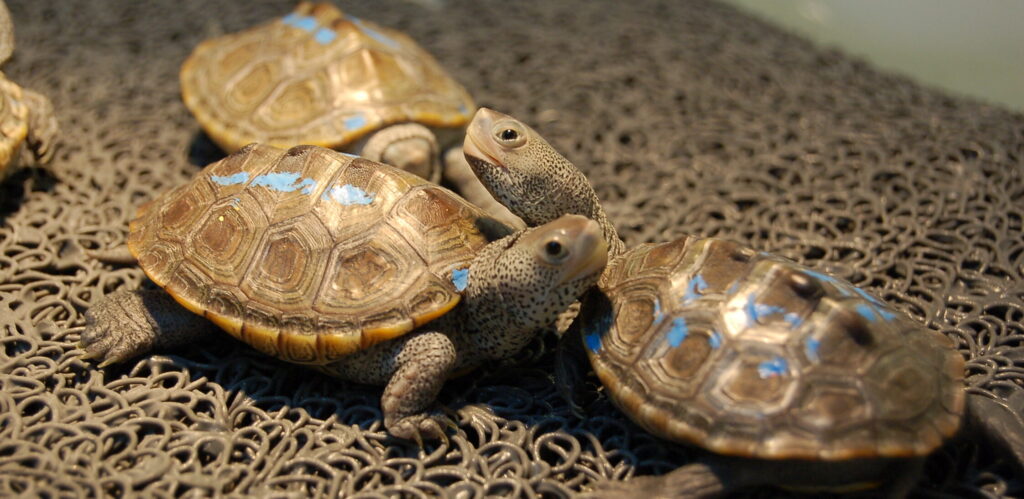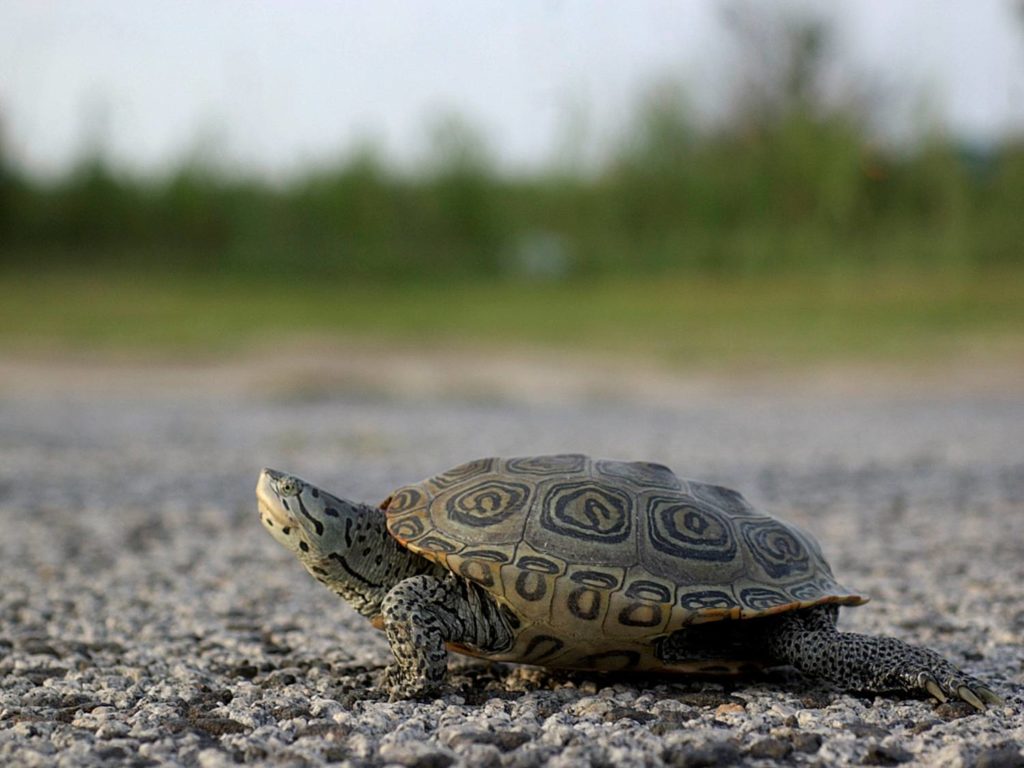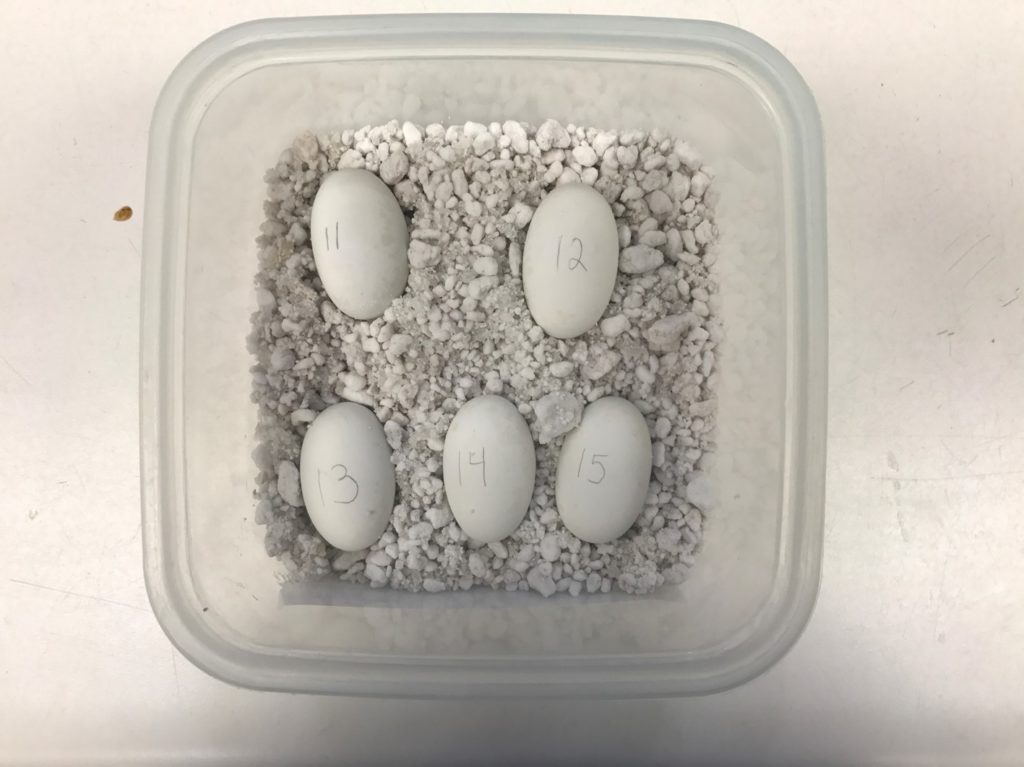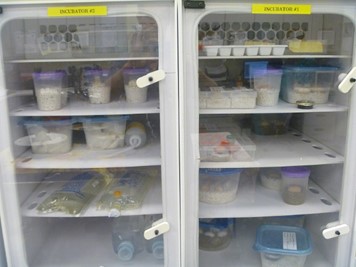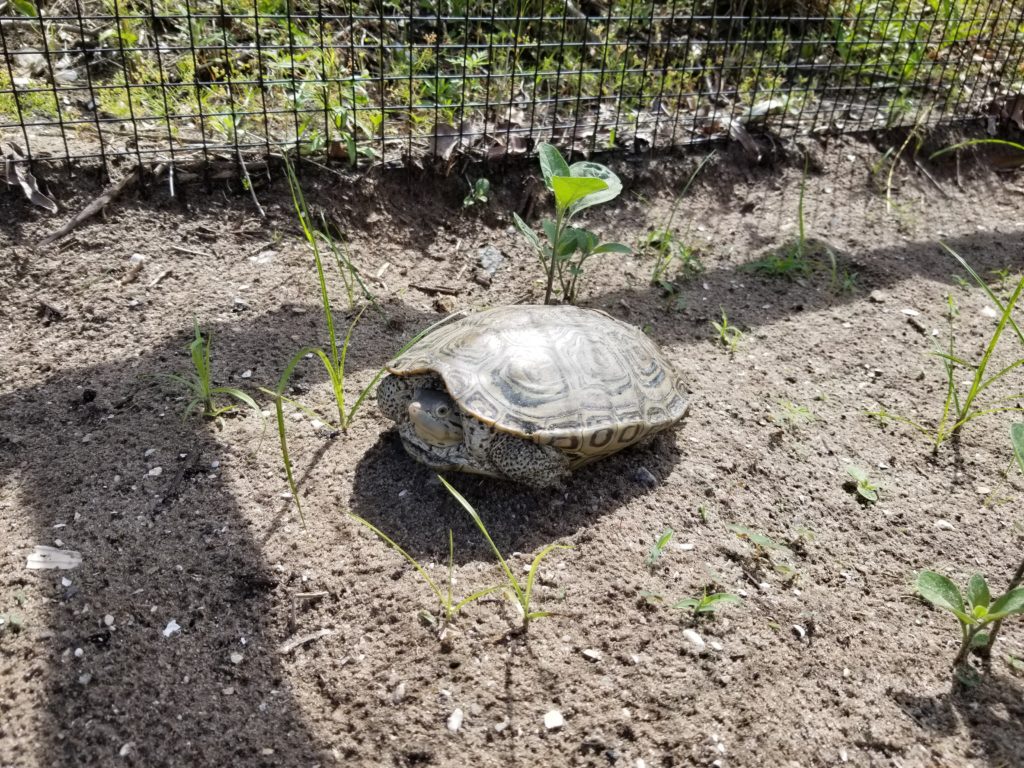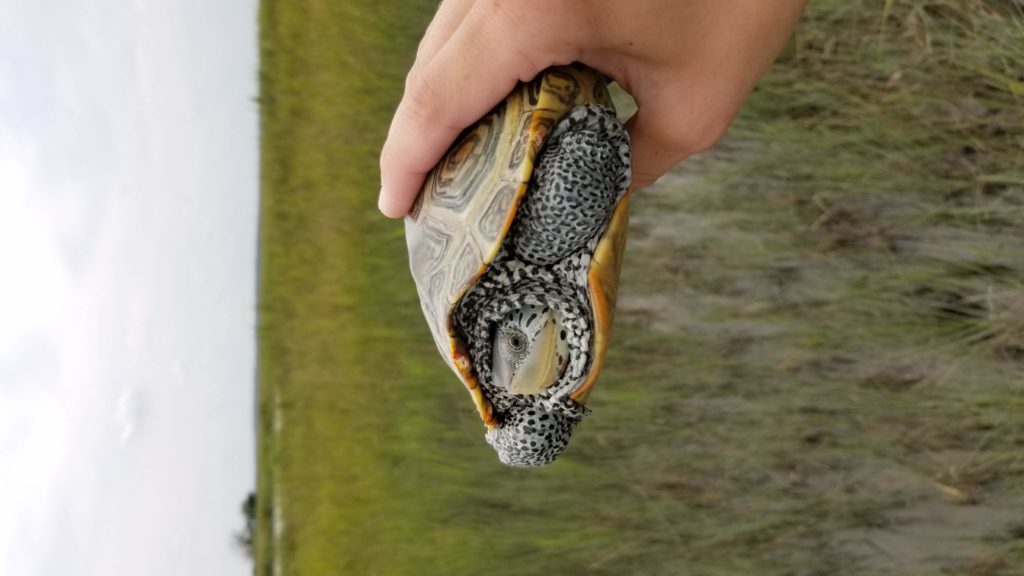By Michelle Kaylor
JIA GSTC Rehabilitation Manager
The Jekyll Island Authority’s Georgia Sea Turtle Center (GSTC) has historically had a significant number of diamondback terrapin (DBT) hatchlings—743 since 2007! What may be unknown to many is how these little turtles end up at the Georgia Sea Turtle Center.
During the spring and summer nesting season—from April to July—many females are tragically struck by cars while searching for dry and high ground and crossing the Downing Musgrove Causeway—aka, Jekyll Island Causeway. Most of the time, the eggs are completely crushed. However, on a few occasions, the eggs are still intact.
All injured and deceased females found on or near the causeway are brought back to the GSTC. If the eggs are intact, they are collected. Terrapins that are still alive are stabilized and then induced with oxytocin so that they are able to lay their eggs naturally. Once the eggs are delivered, rehabilitation technicians take measurements (mass, length, and width) and place them in an egg container filled with a substrate—a commercial egg incubation material made from volcanic glass). The egg containers are then placed in incubators and checked periodically for signs of mold, non-viability, and hatching.
Terrapins, like all other turtles, display temperature-dependent sex determination. In other words, the temperature of the egg determines the hatchling’s sex. Male terrapins are produced when incubating egg temperatures are below 82˚F and females when temps are above 86˚F. The temperature range between 82˚F and 86˚F can produce either male or female turtles at the time of hatching. In order to make up for the loss of females on the Jekyll Island Causeway, the GSTC incubators are set to 86-87˚F.
During the 2019 DBT season, 90 terrapins hatched between July and August for the GSTC’s “Rear and Release” program. New hatchlings are monitored for a week while their umbilicus (the remnants of the yolk sac) absorbs into their body. From there, hatchlings are put into small white tubs with water, and the salinity (salt level) is gradually increased. Once new terrapins begin eating well, they are moved to a larger display tank.
For the next eight or nine months, these “girls” will be cared for and monitored. The goal is to help them develop to a substantial size so that they have a greater chance of survival in the wild. The hatchlings are fed a combination of krill, turtle pellets, and reptomin (turtle food) every day. Finally, the following May and June, they are systematically released into the wild as the nesting season begins again.
There is nothing more gratifying than watching these animals—from the moment they are first found on the road still in their eggs; to their birth as they poke their heads out of their shells; to their learning to eat, swim, and grow; and finally, to their release back to the marsh.
The 2019 diamondback terrapin season could not have been successful without the support of the Jekyll Island Foundation’s donors. To help the GSTC with terrapin rescue and research efforts for the 2020 nesting season, visit Help Diamondback Terrapins.
